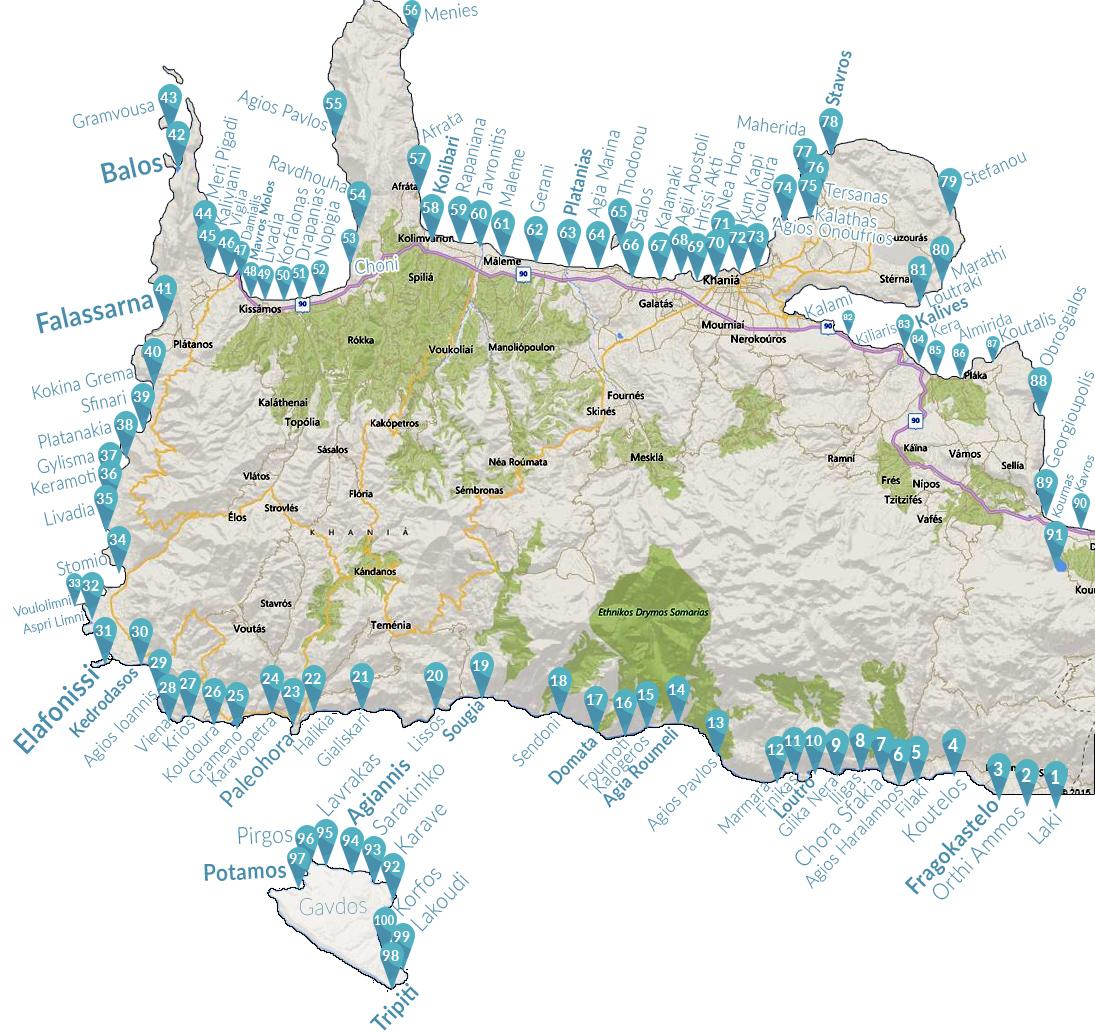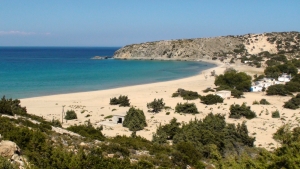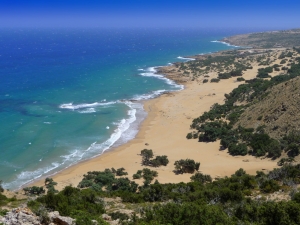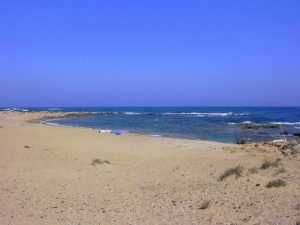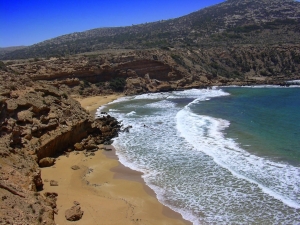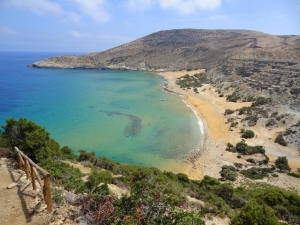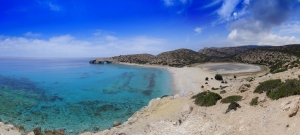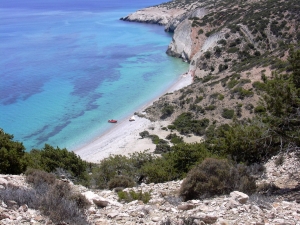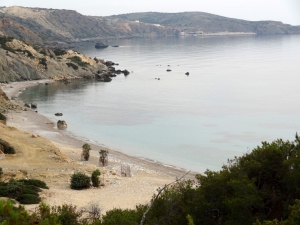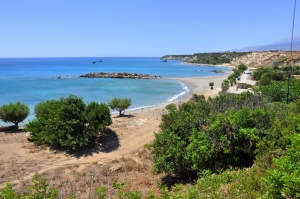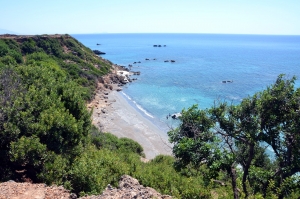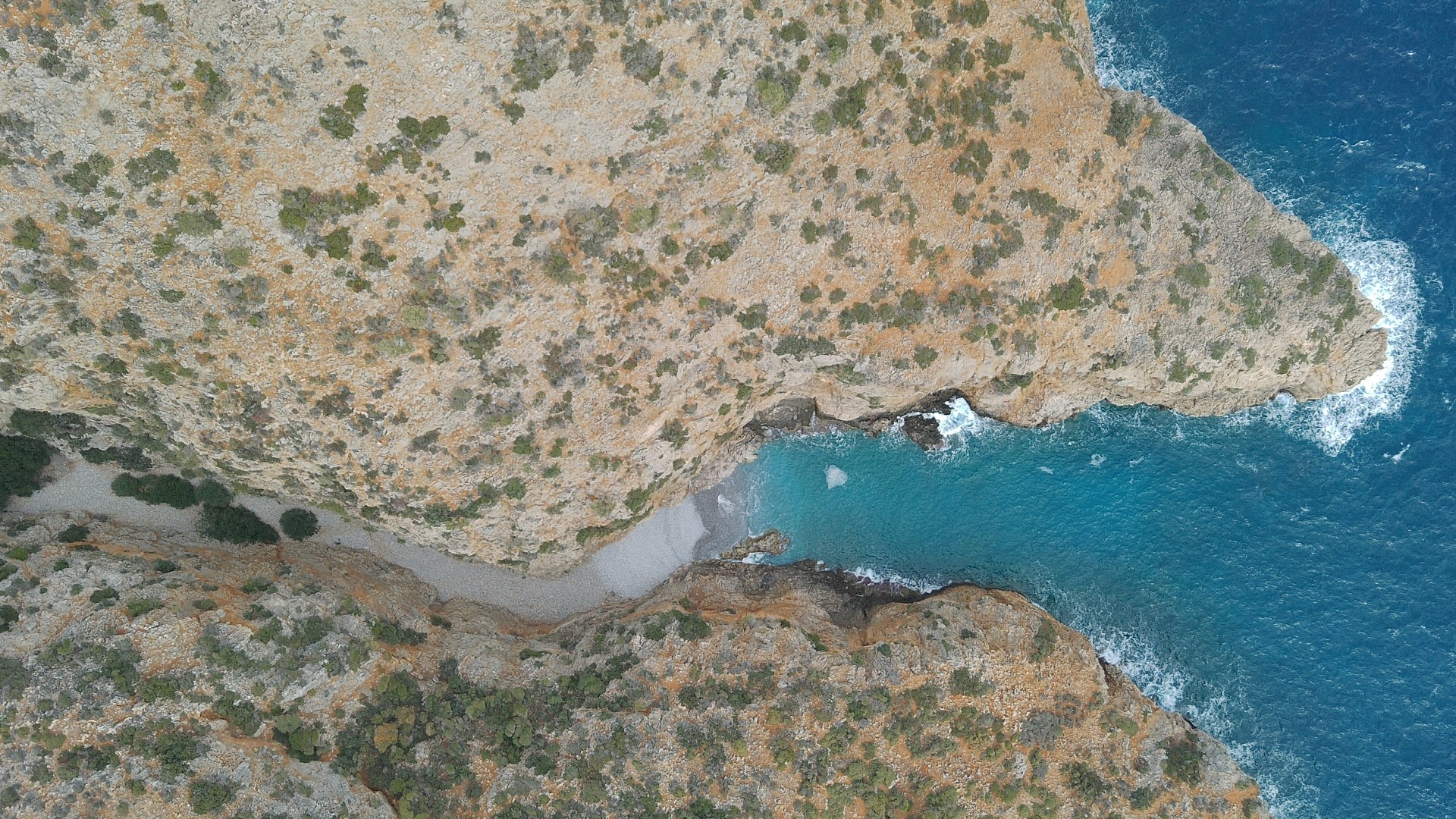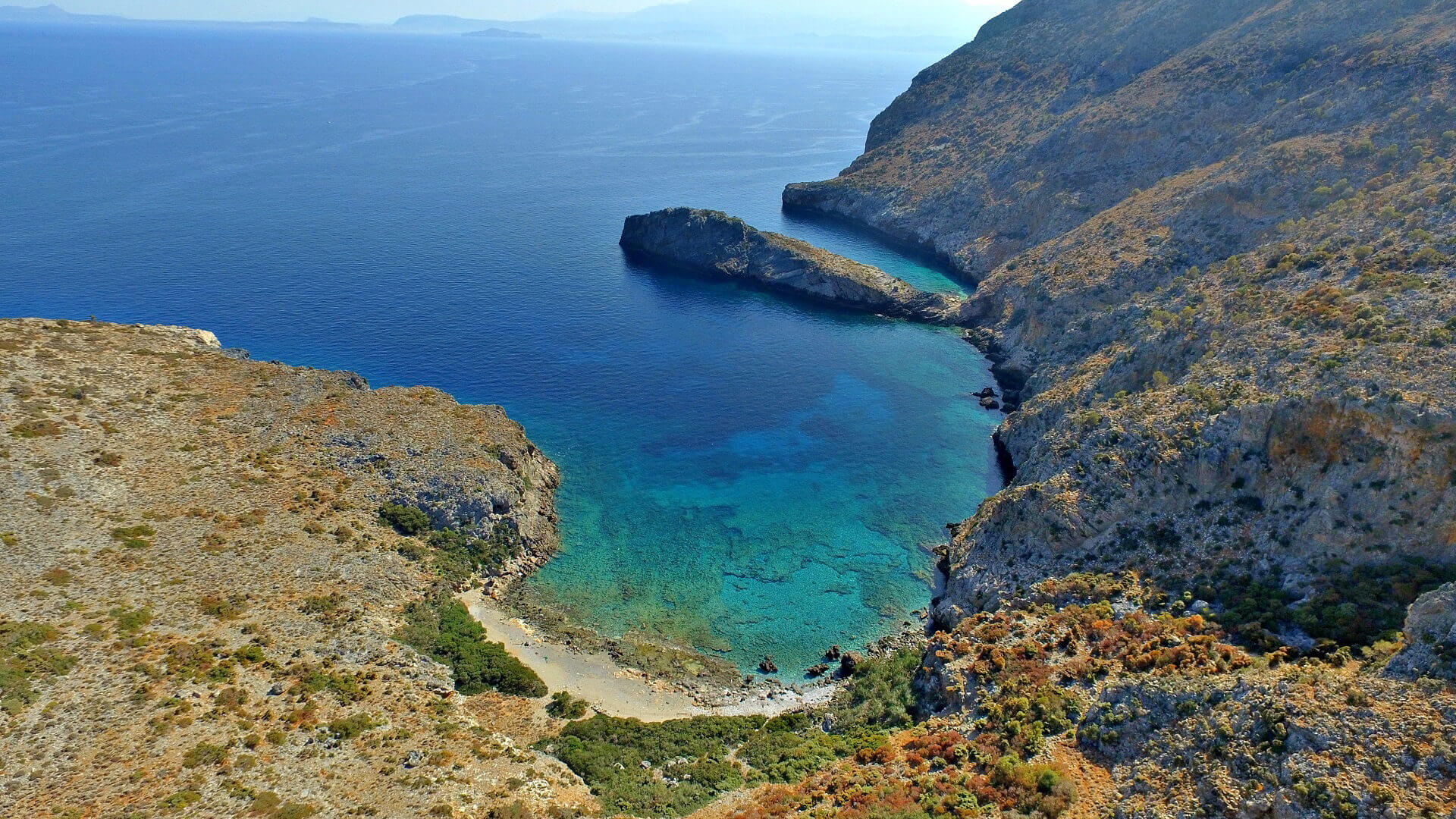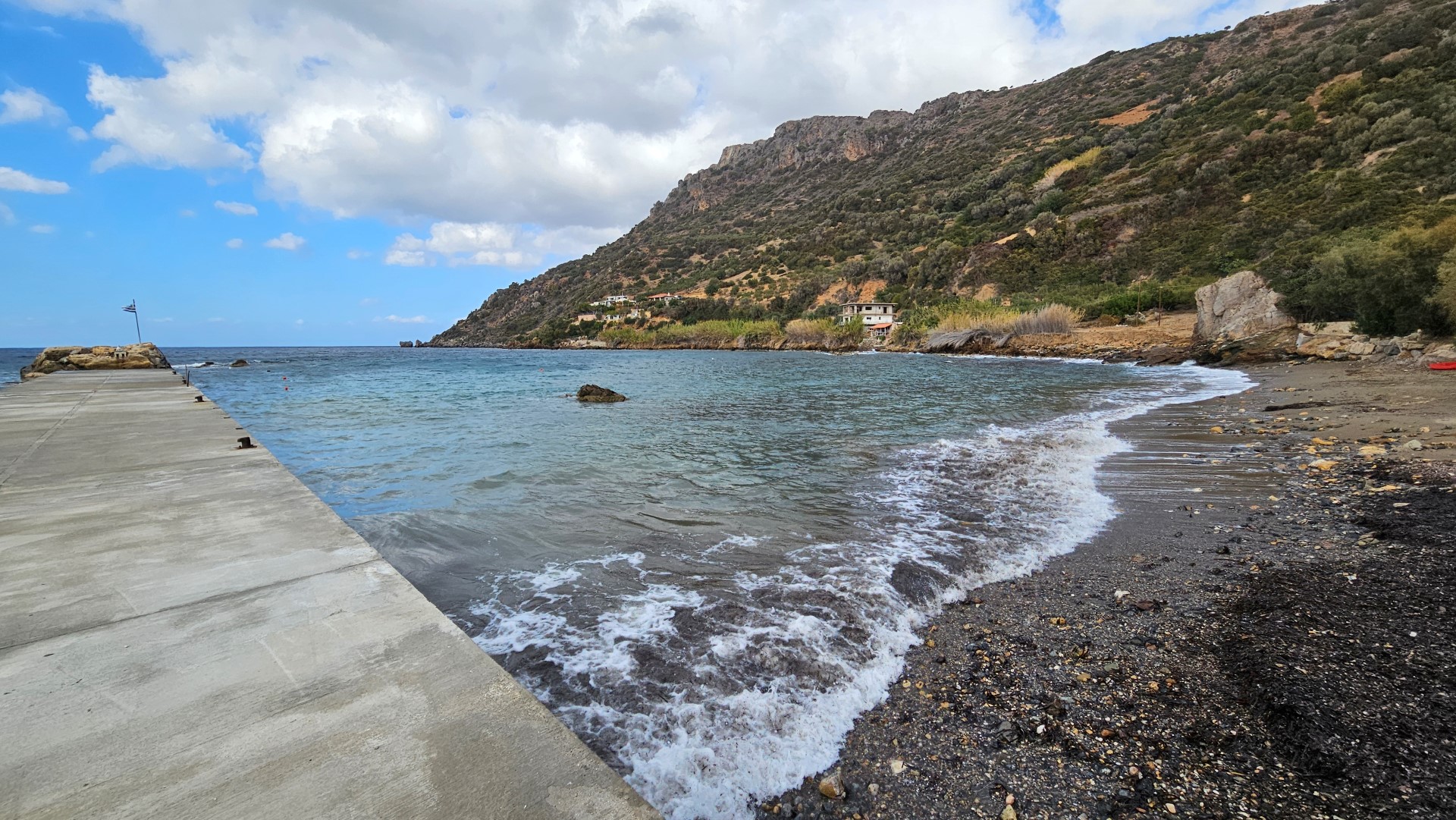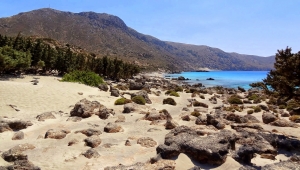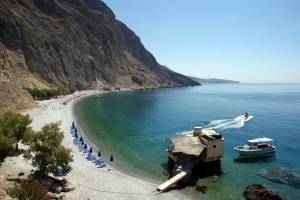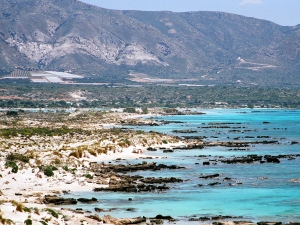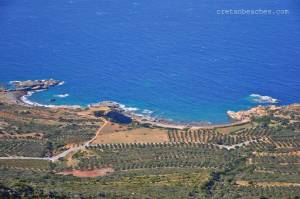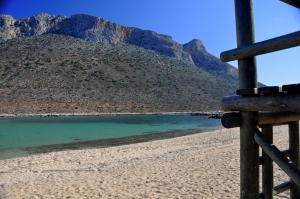It is named after the Saracen pirates who once used the island as a base of attacks. Sarakiniko, like all beaches in Gavdos is one of the best beaches in Greece that any description can not fit the beauty. It is located on a large cove bay looking north.
The beauty of the beach and the surrounding region cannot be reflected within the lines of this text. It is not surprising that the Discovery Channel has declared Agiannis as the second best beach in the world after one beach in Hawaii. Indeed, Agiannis is a stunning secluded sandy beach, in a wild African landscape.
The beach Lavrakas is located about 2km west of Agiannis, near the northern edge of Gavdos. Lavrakas can be accessed by walking 20'-30' Agiannis, where you can go by bus. Lavrakas is a fantastic beach with golden sand and turquoise water. It is no organized and is one of the most secluded beaches, since it is accessed only on foot.
Pirgos has two adjacent emerald sandy beaches, which are absolutely unorganized and isolated. Many campers prefer Pirgos for camping, as it is very far from any tourist infrastructure. The beaches are hidden in the heart of a large bay, surrounded by dunes and junipers and protected by steep cliffs.
The beach is surrounded by pines and cedars, making it a favorite destination for campers for those who love hiking. If you come to the river it is worth observing the fossils on the rocks or have some spa with the clay!
The beach of Tripiti is located 7km south of Karave harbor and is the southernmost point of Gavdos and Europe. The eastern part of the beach is sandy, while the part close to the "tip" of Gavdos has large stones and pebbles.
1km south of Korfos settlement, at Gavdos island, there is a very quiet beach with amazing bottom, Lakoudi, accessed only by walking from Korfos or by boat. Lakoudi is one of the nicest beaches on the island and surely deserves a visit.
Korfos (i.e. Bosom) is located approximately 2km south of Karave, the only port in Gavdos. There is a footpath along the coast from Karave that leads to the dorp of Korfos (60'). Moreover, there is a bus running to Korfos from Karave.
Lakki is located 81km southeast of Chania and 48km southwest of Rethymno city. It’s located close to Fragokastelo, just 2km eastern, near the village Skaloti. A small stream that runs in the Gorge of Sfaggofarago empties to the west of Lakki. The beach is accessed by driving in the road that starts from Skaloti.
The beach can be mainly accessed by boat, as it is hard to find the beach in the complicated dirt road network of the area. The beach is surrounded by low vegetation.
Sfakos is located between Menies and Kolymbari. It is one of the most isolated beaches in Crete, as access from land is possible, but very difficult. Almost exclusively, most people come to it by boat from nearby Kolymbari or other beaches near Chania.
Limnionari or Agios Georgios beach is located in one of the most isolated areas of Crete. It is formed in a narrow bay at the exit of the Agios Georgios gorge, which starts south of the now deserted monastery of Saint George in Menies.
The secluded area of Chironisia lies on the wild eastern side of the Rodopou Peninsula, just before the enchanting bay of Menies.
Neratzia beach is the northernmost on the Ravdoucha coastline and is located approximately 21 km west of Chania, at the base of the Rodopos peninsula.
Kedrodasos (i.e. cedar forest) is an amazing beach, located 76km southwest of Chania and 1km east of the famous Elafonissi lagoon. The beach is filled with juniper trees (mistakenly confused with cedars) and sand dunes, reminding of Lebanese beaches.
Glyka Nera (meaning "sweet water") is one of the most beautiful beaches in Crete, with deep blue water color and nice pebbles. In 2003, the beach was ranked among the best 20 in Europe by London Times. This is located 4 km west of Chora Sfakion and 75km south of Chania. This is called like this because of the fresh water that gushes from the pebbles!
Elafonisi is located 76km west of Chania and 5km south of Chrysoskalitisa Monastery, in the southwesternmost point of Crete. Elafonisi is an oblong, which often "breaks" in two parts by water giving the impression of being a separate island.
Xotikospilio (i.e. the cave of elfs) is located 70km southwest of Chania, 30km south of Kissamos and 1.5 km northwest of Keramoti village. It is named after the small cave next to it where locals have seen elfs!
Stavros (i.e. cross) is a seaside village located 17km northeast of Chania, at the northernmost edge of Cape Akrotiri. One characteristic feature of the area is the very steep camel-shaped mountain rising opposite the harbor of Stavros. The mountain is famous because there were filmed scenes for the film “Zorba the Greek”, where Anthony Quinn danced the famous Sirtaki Dance in 1964. Then Stavros was a small fishing village.
Stefanou beach is located near the position of Seitan Limania (i.e. satan harbours), 22km northeast of Chania and 2km east of the village Chordaki, at the east side of Akrotiri Cape. The wider area is named Seitan Limania, after the wild landscape, the steep cliffs and the strong sea streams which are very dangerous. Here are situated three parallel narrow coves, well protected from the waves.









